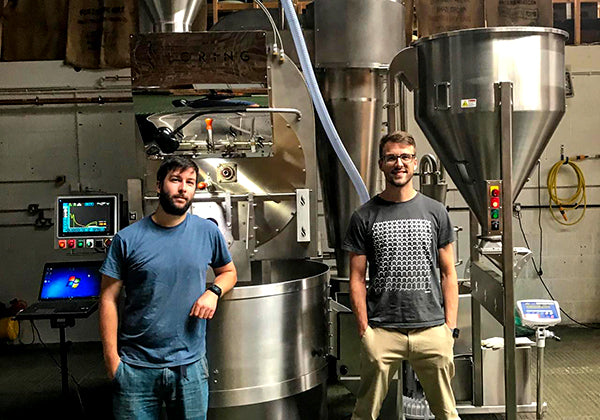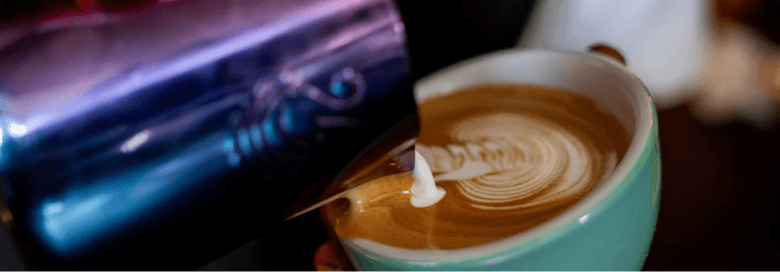Roasting on a Loring

Getting our roast on with Mike
200 Degrees has grown so much over the last few years, our 15kg & 30g Topers had served us well but as demand grew, we knew it was time to upgrade the roaster and bring in the heavy artillery.
Exciting times in spring 2020 when we took delivery of our Loring S70 Peregrine roaster. Precision-made in the USA, this state-of-the-art roaster has taken our roasting game to the next level.
We sat down with head roaster Mike, coffee in hand, to chat and find out a little more about these roasters.
Let's jump in the deep end and ask how does it differ from our other roasters?
The Loring roasts by recirculating hot air through a static drum (convective) rather than heating a rotating drum and the air inside like a traditional drum roaster (conductive and convective). Recirculating the hot air and keeping it within the closed system has two significant benefits: energy efficiency. It does not need to constantly heat new cooler air and reduce our emissions by up to 80%. As the air is recirculated, it goes past the cyclone burner, which burns off any smoke/fumes generated during the roast process, giving us essentially a built-in afterburner.
How was moving over from the Toper initially? Challenging?
Of course! It was always going to be a challenge and would push our knowledge of the coffees and profiles we use, but that's also where it becomes fun. Thankfully the Loring has a really clear roast software, and combining that with Cropster meant that we could see everything that was going on, which made transferring our roasts across smoother than anticipated. We are still learning how to get the best from the roaster with every roast and new coffee we put through.
Has it changed anything flavour wise?
Absolutely, but only for good. We've found our coffees are tasting much cleaner, and we can make the coffees shine with brightness and acidity, but at the same time, some of the fuller-bodied and chocolate notes have been enhanced with our blends. Overall, our shops and customers have noticed a jump in the quality that we are producing.
We've also found that we have to approach our roasting schedule slightly differently as the coffee de-gases marginally slower than it did with our Toper. Previoulsy, we were happy to put a coffee on the bar 24 hours after roasting, but now we are finding it needs a good few days before it's at its peak.
Does the Loring have any other benefits to the roastery?
Most definitely, we've already started to use it to our benefit by training some of our other roastery staff how to man the Loring and successfully use the Auto roast function. This allows us to set a pre-made roast profile with strict parameters, and the roaster will, in Essense, use its state-of-the-art technology to follow that profile and end the roast. This is an excellent tool for training and getting people comfortable around the concept of coffee roasting.
Another benefit is that it has allowed us to increase our roasting capacity with next to no change to our roastery set up. The old roaster allowed us to roast 30kg in around 20 minutes, and now we can roast 70kg in under 15 minutes. Such a game changer!
As we navigate our way out of the global pandemic and all the difficulties we’ve faced during the last twelve months, it is fair to say with the Loring Roaster; we will be soaring to new heights in the roasting world.
